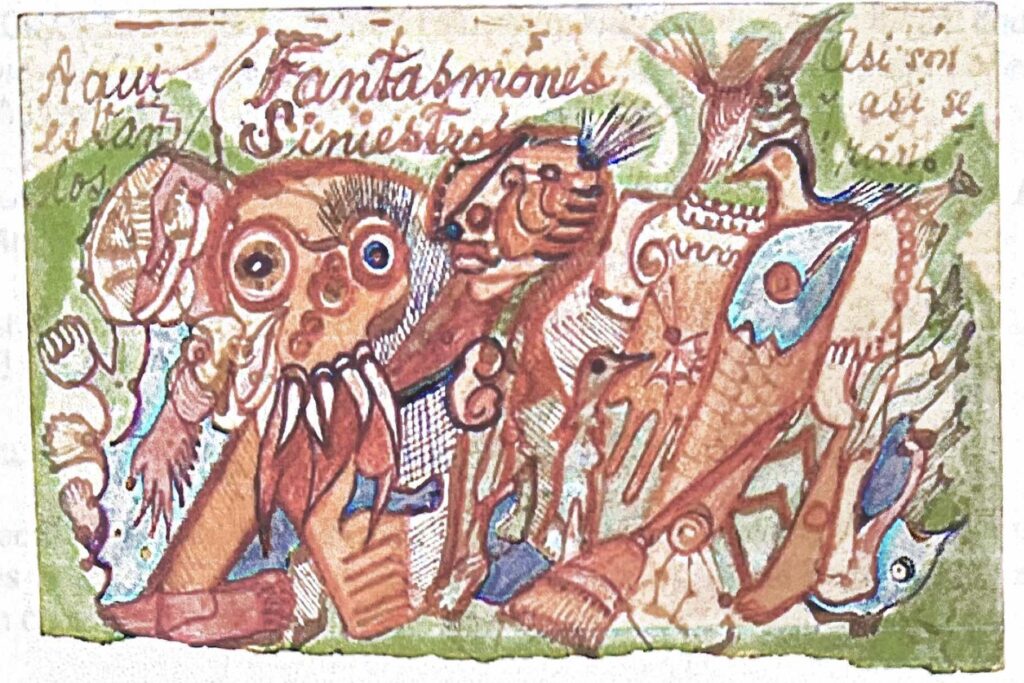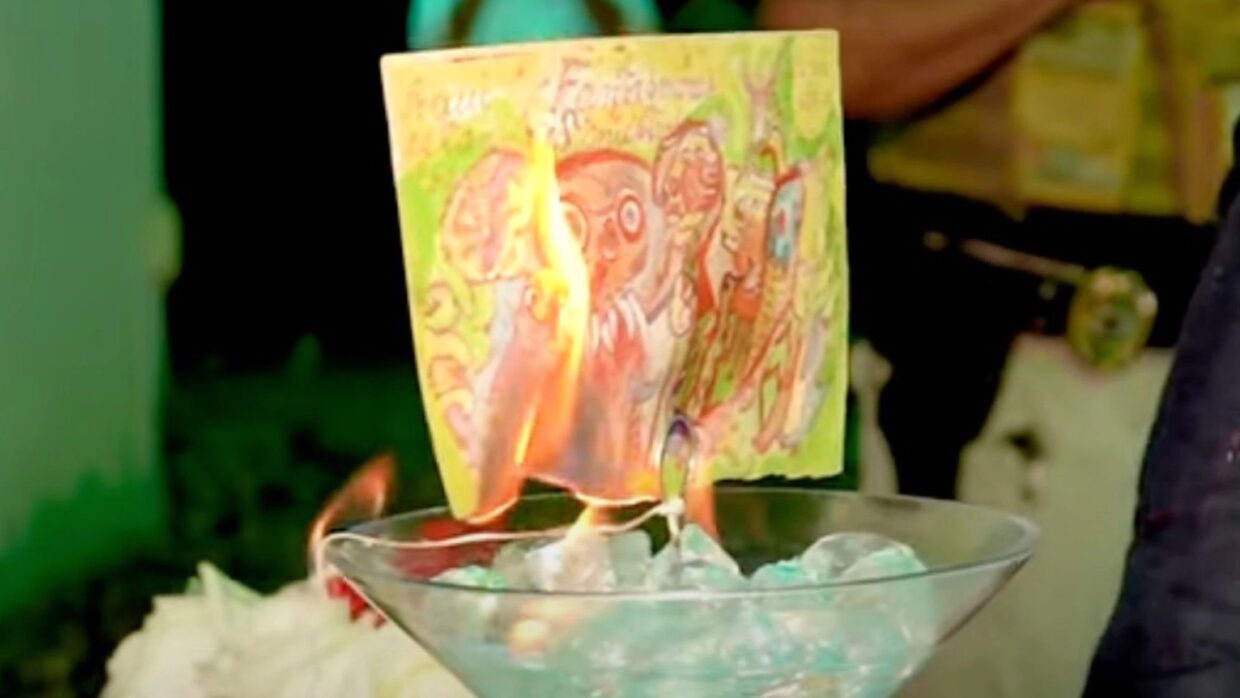An allegedly authentic Frida Kahlo drawing was burned at a party in July — but it’s only just catching the world’s attention. Placed in a cocktail glass filled with blue alcohol, Mexican businessman Martin Mobarak lit the drawing, valued at approximately $10 million, aflame to sell NFTs through his new company, Frida.NFT. (With the aim of donating the proceeds to charity.) The image was then converted into 10,000 NFTs, but to date, only four have reportedly been sold with a valuation of about $11,000.
What’s Happening
Made by Kahlo in 1945, Fantasmones Siniestros (Sinister Ghosts), was a 9 by 6 inch drawing in watercolor, crayon pencil, pen and sepia ink. A copy of the provenance report on Frida.NFT claims that these materials “correspond to a page torn from Frida Kahlo’s diary (1944-1954).” It’s estimated that Kahlo completed about 150 paintings and several drawings before her death in 1954. This work was originally presented as a gift to Venezuelan art critic Juan Röhl and later purchased by New York-based gallerist Mary-Anne Martin. In 2013, the work was sold to a private collector. Mobarak claims to have purchased the work in 2015 from Martin, but Martin claims that she never sold him the work.
All of Kahlo’s artistic productions were designed as national monuments by the Mexican government in 1984. This includes “easel work, graphic work, engravings and technical documents” which are owned either by “the nation or private individuals.”
Mobarak’s burning was both a PR stunt for his new company and an attempt to kick off a viral social media challenge, like the “the ice bucket challenge, but with fire.” However, in Mexico, the deliberate destruction of an artistic monument is a federal crime and this event has set off an investigation to prove the authenticity of the burned work.
Mobarak faces a significant legal bind if the drawing proves to have been authentic, and even if it wasn’t. If the drawing was an original, he’s committed a federal crime. If the drawing was a copy, then he may have violated copyright law, or fraud — deceiving his investors and handful of NFT buyers.
In an interview with the New York Times, Mobarak, when asked whether he regretted burning the painting, said, “I like to say I don’t regret it.”

Fantasmones Siniestros (Sinister Ghosts) by Frida Kahlo.
Why it Matters
This certainly isn’t the first time that people have burned analog copies of art to create a form of exclusivity for its holder.
In October of this year, Damien Hirst burned 1,000 of his own pieces from his first NFT collection, The Currency. That project originally launched in July 2021 with a collection of 10,000 real-life dot paintings, which buyers could chose to keep or have the original painting destroyed and opt to keep an NFT version. In 2021, Morons (White) by Banksy was torched and then sold as an NFT for $380,000. Unlike the aforementioned Kahlo stunt, neither of these projects was seen as destroying and creating new work, but symbolically “transferring” the original painting to the NFT space.
(Alternatively, the burn.art project doesn’t literally burn physical work, but mines $ASH by “burning” NFTs, making each remaining NFT “rarer, favoring their collectors.” Symbolically, very similar).
However, there is a clear line between burning a work created by oneself as an artist and burning a work protected as a national monument — statement or no statement to be made. As such, there has been an outpouring of anger about the Kahlo-burning incident. From Reddit threads to Mexico Post, to YouTube comments and more — the general consensus is probably best summarized by Julian Garro’s comment on the video of the image burning: “One of the stupidest moments in human history.”
What They Said
“People may see it as I destroyed it. But I didn’t. This way I am bringing it to the world. I am letting everybody see it. I think it does more good for the world and makes a statement rather than just sitting in someone’s private collection.” — Martin Mobarak



